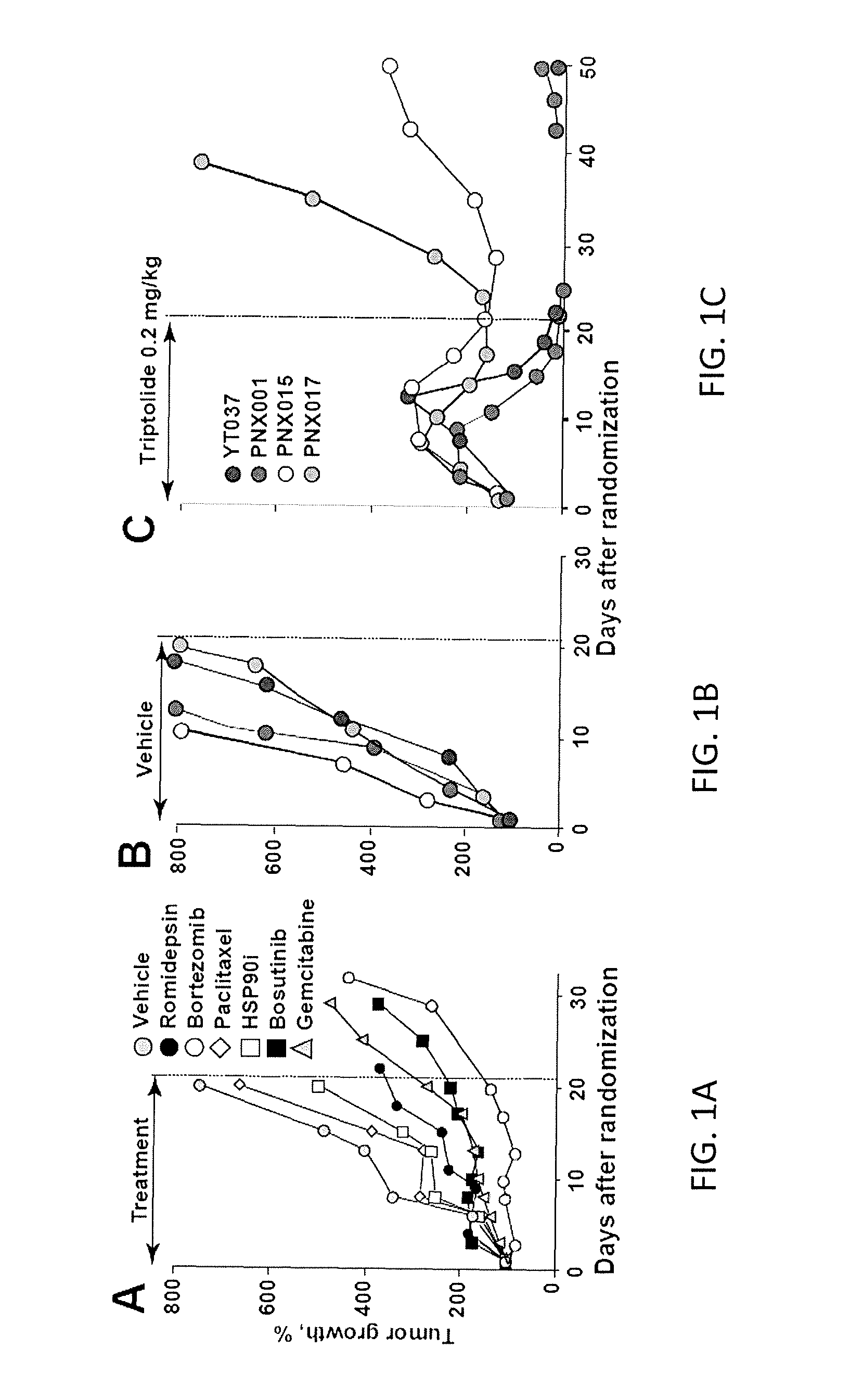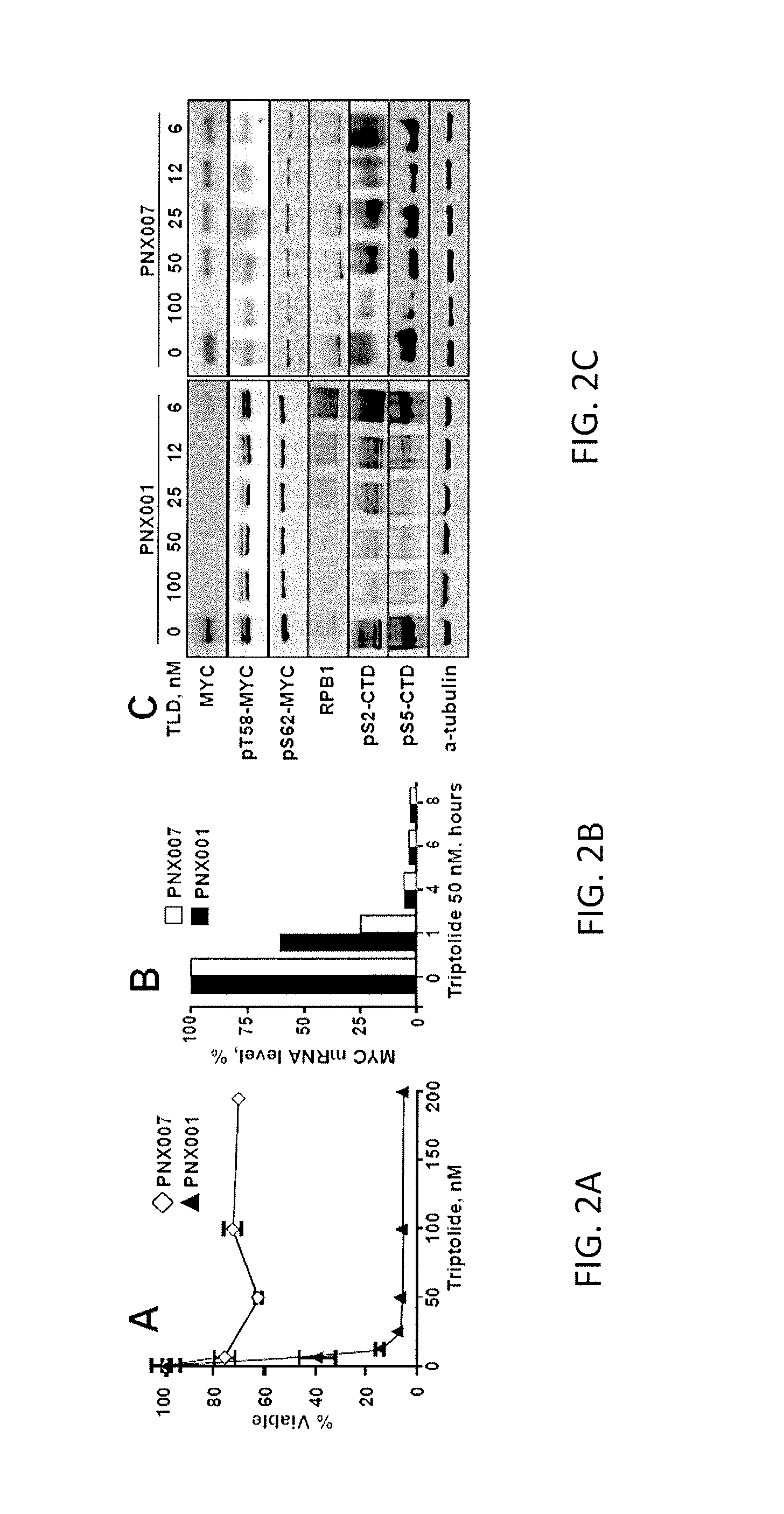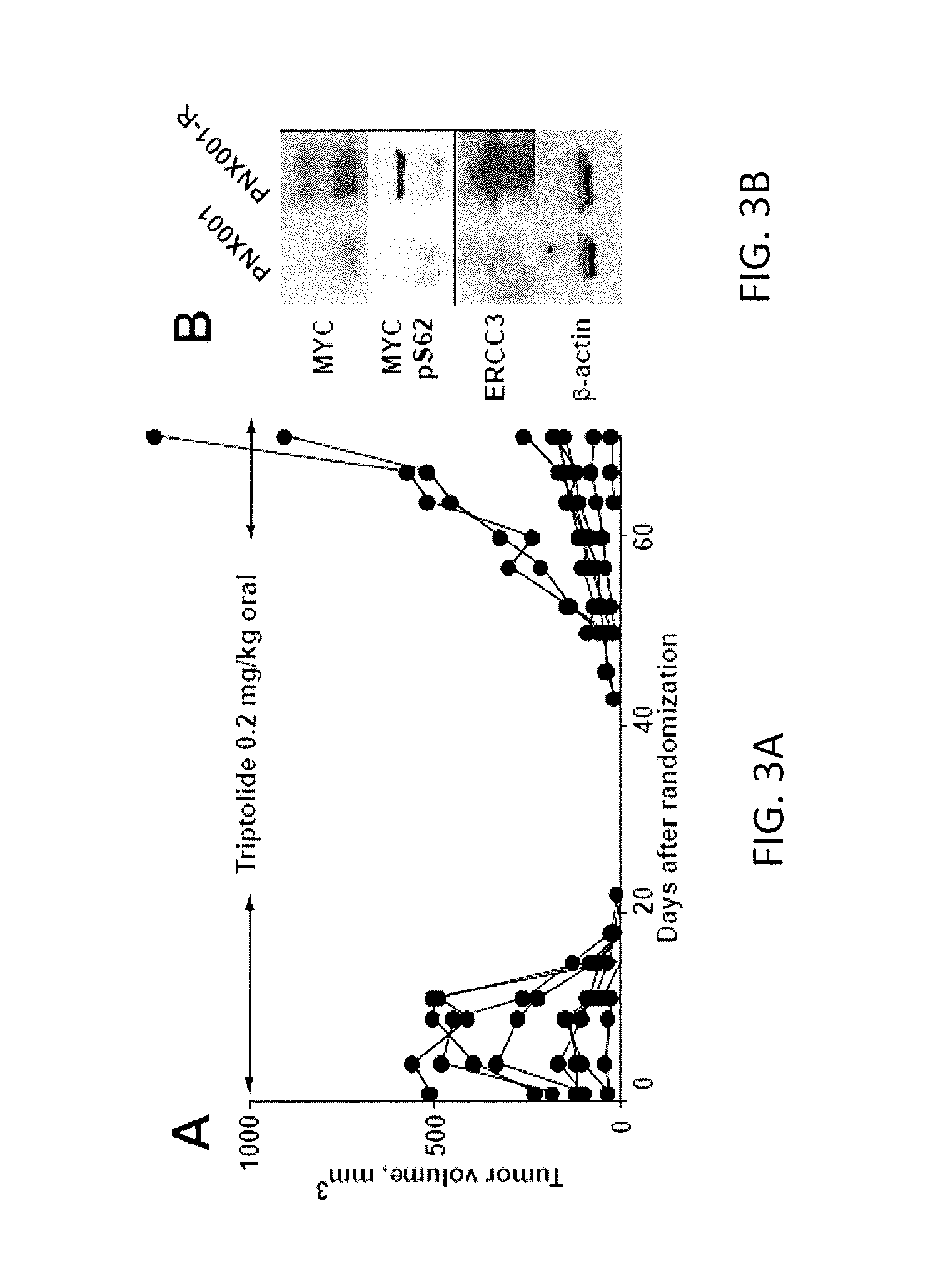C-MYC as a Biomarker for Tumor Sensitivity to Treatment with RNA Polymerase II Inhibition
a biomarker and tumor sensitivity technology, applied in the field of cancer treatment, can solve the problems of limited efficacy of chemotherapy, cancer is lethal, and the progress of improving the survival rate of pancreatic cancer, and achieve the effects of inhibiting the expression or biologic activity, inhibiting the transcription of the ercc3 gene, and inhibiting the translation of the ercc3 mrna
- Summary
- Abstract
- Description
- Claims
- Application Information
AI Technical Summary
Benefits of technology
Problems solved by technology
Method used
Image
Examples
example 1
Chemical Genomics Identified Transcription as a Target in PDAC
[0055]Through an IRB-approved protocol, patient-derived xenografts (PDX) and cell lines were derived from PDAC surgical samples. The technique of rapid expansion (5-6 passages) avoided artificial selection of 2D-adapted cell line subclones. Iterative chemosensitivity screens of reprogrammed PDAC cells from 6 patients were conducted using a focused library of 867 drugs (NCI Clinical Collection and the FDA-approved drug set). This moderate scale, fully-automated screen assessed tumor cell viability at 6 drug concentrations ranging from 16 nM-10 μM. Sixteen hits were identified (area under the curve (AUC) 50)
[0056]<100 nM) that were highly cytotoxic in these 6 cell lines. Ten of these drugs directly inhibit gene transcription, and none have been previously considered for PDAC therapy: triptolide was the most potent among transcriptional repressors including actinomycin D, epirubicin (and other anthracyclin antibiotics), plic...
example 2
Targeting ERCC3 with Triptolide Shows Unprecedented Activity in vivo
[0057]The screen hits were then validated in vitro and, selected drugs were directly tested on a genetically-characterized panel of PDAC PDX models. Treatment of pancreatic PDX with a wide range of clinically available compounds typically produces temporary growth delays (FIG. 1A). Extensive testing of one of the PDAC patient-derived xenografts, PNX001, revealed transient growth delay during the 21-day treatment trials of all tested agents, including a number of standard chemotherapies used in PDAC (FIG. 1A). It was determined that despite nearly identical growth rates of untreated patient-derived xenografts at F1-F3 passage (FIG. 1B), there was a dramatic difference in their sensitivity to triptolide (FIG. 1C, 2A): Two models, YT037 (dark grey circles) and PNX001 (middle grey circles), n=5 mice, 10 tumors in each group showed complete regression by the end of the 21-day treatment period. These mice remained tumor-f...
example 3
ERCC3 as Target of Interest for PDAC
[0058]Such unprecedented efficacy of triptolide in MYC-amplified PDX models prompted further investigation of the drug's effect on its transcriptional target, the RNA Pol II complex. Triptolide covalently binds to ERCC3, the xeroderma pigmen-tosum group B protein operating in the leading edge of the megadalton RNA Pol II complex as a helicase and a DNA translocase critical for promoter opening and promoter escape. MYC mRNA is one of the shortest-lived and ranks as the primary target of triptolide.
[0059]In both, sensitive PNX001 and refractory PNX007 cells (FIG. 2A), triptolide rapidly suppressed MYC transcripts (FIG. 2B). Contrastingly, triptolide-resistant PNX007 cells were insensitive to triptolide-induced MYC degradation (FIG. 2C). Of note, phosphorylated MYC proteins (FIG. 2C, pT58- and p562-MYC) resisted triptolide effects in both cell lines.
[0060]Furthermore, pancreatic cancer PDX tumors that reappeared after complete regression (FIG. 3A), h...
PUM
| Property | Measurement | Unit |
|---|---|---|
| Molar density | aaaaa | aaaaa |
| Molar density | aaaaa | aaaaa |
| Sensitivity | aaaaa | aaaaa |
Abstract
Description
Claims
Application Information
 Login to View More
Login to View More - R&D
- Intellectual Property
- Life Sciences
- Materials
- Tech Scout
- Unparalleled Data Quality
- Higher Quality Content
- 60% Fewer Hallucinations
Browse by: Latest US Patents, China's latest patents, Technical Efficacy Thesaurus, Application Domain, Technology Topic, Popular Technical Reports.
© 2025 PatSnap. All rights reserved.Legal|Privacy policy|Modern Slavery Act Transparency Statement|Sitemap|About US| Contact US: help@patsnap.com



